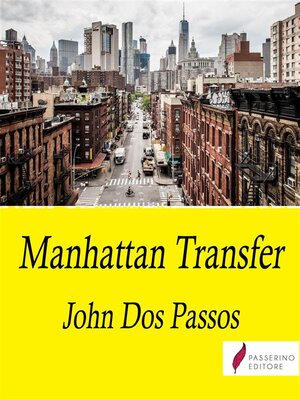
Sign up to save your library
With an OverDrive account, you can save your favorite libraries for at-a-glance information about availability. Find out more about OverDrive accounts.
Find this title in Libby, the library reading app by OverDrive.



Search for a digital library with this title
Title found at these libraries:
| Library Name | Distance |
|---|---|
| Loading... |
Manhattan Transfer is an American novel by John Dos Passos published in 1925. It focuses on the development of urban life in New York City from the Gilded Age to the Jazz Age as told through a series of overlapping individual stories. It is considered to be one of Dos Passos' most important works. The book attacks the consumerism and social indifference of contemporary urban life, portraying a Manhattan that is merciless yet teeming with energy and restlessness. The book shows some of Dos Passos' experimental writing techniques and narrative collages that would become more pronounced in his U.S.A. trilogy and other later works. The technique in Manhattan Transfer was inspired in part by James Joyce's Ulysses (1922) and T. S. Eliot's The Waste Land, and bears frequent comparison to the experiments with film collage by Soviet director Sergei Eisenstein.
John Roderigo Dos Passos (January 14, 1896 – September 28, 1970) was an American novelist, most notable for his U.S.A. trilogy. Born in Chicago, Dos Passos graduated from Harvard College in 1916. He traveled widely as a young man, visiting Europe and the Middle East, where he learned about literature, art, and architecture. During World War I, he was an ambulance driver for American volunteer groups in Paris and Italy, before joining the U.S. Army Medical Corps.
John Roderigo Dos Passos (January 14, 1896 – September 28, 1970) was an American novelist, most notable for his U.S.A. trilogy. Born in Chicago, Dos Passos graduated from Harvard College in 1916. He traveled widely as a young man, visiting Europe and the Middle East, where he learned about literature, art, and architecture. During World War I, he was an ambulance driver for American volunteer groups in Paris and Italy, before joining the U.S. Army Medical Corps.







